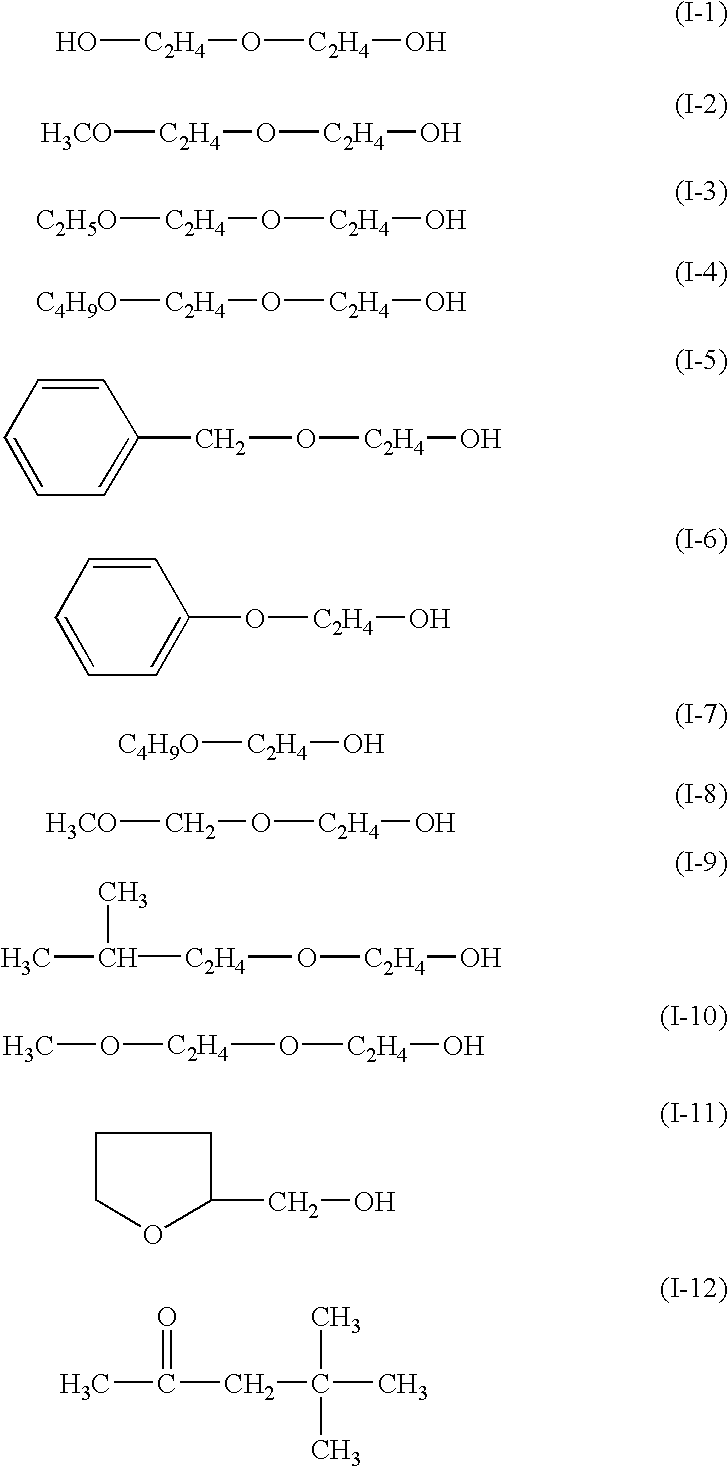Fluorescent color conversion film, fluorescent color conversion filter using the conversion film, and organic light-emitting device equipped with the conversion filter
a conversion filter and fluorescent technology, applied in the direction of discharge tube luminescnet screen, discharge tube/lamp details, incadescent envelope/vessel, etc., can solve the problems of chromaticity gradually deviating, difficult technology for arrangement, and high cost of manufacturing such an arrangement, so as to reduce the monomer in the system, prevent the dielectric constant of the matrix resin, and improve the color conversion characteristic
- Summary
- Abstract
- Description
- Claims
- Application Information
AI Technical Summary
Benefits of technology
Problems solved by technology
Method used
Image
Examples
example 1
The filter portion illustrated in FIG. 1 is fabricated by the process described below.
Fabrication of Color Filter Layers
A transparent substrate 5 of corning glass (143.times.112.times.1.1 mm) was prepared. Color filter red (available under the trade name Colormosaic CR-7001 from Fuji Film Olin Co., Ltd.) was coated by means of spin-coating on the substrate, followed by patterning by photolithography, to obtain a red filter layer having a stripe pattern of 1 .mu.m thickness, 0.104 mm width and 0.226 mm gap.
Similarly, each of color filter blue (available under the trade name Colormosaic CB-7001 from Fuji Film Olin Co., Ltd.) and color filter green (available under the trade name Colormosaic CG-7001 from Fuji Film Olin Co., Ltd.) was coated by means of spin-coating on the substrate, followed by patterning by photolithography, to obtain each of a blue filter layer 4 and a green filter layer 3 each having a stripe pattern of 1 .mu.m thickness, 0.104 mm width and 0.226 mm gap.
Fabrication ...
example 2
A fluorescent color conversion filter of Example 2 was fabricated repeating the same process as in Example 1 except that 10 parts by weight of diethylene glycol of Formula (I-1) of Example 1 was replaced by 10 parts by weight of diethylene glycol monomethyl ether of Formula (I-2), and an organic light-emitting device of Example 2 equipped with thus fabricated fluorescent color conversion filter was fabricated.
Example 3
A fluorescent color conversion filter of Example 3 was fabricated repeating the same process as in Example 1 except that 10 parts by weight of diethylene glycol of Formula (I-1) of Example 1 was replaced by 10 parts by weight of diethylene glycol monoethyl ether of Formula (I-3), and an organic light-emitting device of Example 3 equipped with thus fabricated fluorescent color conversion filter was fabricated.
example 4
A fluorescent color conversion filter of Example 4 was fabricated repeating the same process as in Example 1 except that 10 parts by weight of diethylene glycol of Formula (I-1) of Example 1 was replaced by 10 parts by weight of 2-benzyloxyethanol of Formula (I-5), and an organic light-emitting device of Example 4 equipped with thus fabricated fluorescent color conversion filter was fabricated.
PUM
 Login to View More
Login to View More Abstract
Description
Claims
Application Information
 Login to View More
Login to View More - R&D
- Intellectual Property
- Life Sciences
- Materials
- Tech Scout
- Unparalleled Data Quality
- Higher Quality Content
- 60% Fewer Hallucinations
Browse by: Latest US Patents, China's latest patents, Technical Efficacy Thesaurus, Application Domain, Technology Topic, Popular Technical Reports.
© 2025 PatSnap. All rights reserved.Legal|Privacy policy|Modern Slavery Act Transparency Statement|Sitemap|About US| Contact US: help@patsnap.com



